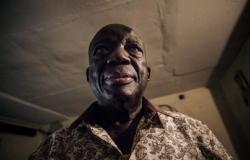The story of Jean Libbera has spanned the ages. Since the 1800s to date, “the man with the double body” has constantly haunted the minds of the people who saw it for the first time. Even though it was only a question of a malformation of the Siamese brothers Jacques and Jean. But who are they? We tell you everything !
“The double-bodied man” was the nickname of Jean Libbera who carried his Siamese brother on his stomach. In French, as mentioned above, this translates to “the man with the double body“. Jean Libbera carried his brother Jacques for several years. At the time, there was talk of a parasitic twin attached to Jean’s abdomen. And history knows very little about parasitic twins when conjoined twins are well documented. To understand this difference, we invite you to discover the story of Jean Libbera, who according to certain sources, participated in circuses in order to show his morphological difference.
Who is Jean Libbera and his Siamese twin?
Jean Libbera is an iconic figure in 19th century medical history, known for his exceptional condition of having a parasitic twin, Jacques, attached to his abdomen. Jean and Jacques were born in 1884, a time when understanding of birth defects was limited. The term “parasitic twin” is used to describe a situation where one twin is partially formed and depends on the other for survival. Unlike conjoined twins, which are two fully formed individuals sharing parts of their body, parasitic twins are incomplete and do not possess independent life. Jean Libbera lived his entire life with this peculiarity, which attracted the attention of scientists and the public. He was featured in circuses and exhibitions, where his case aroused both fascination and pity.
What is the cause of Jean Libbera’s malformation?
Jean Libbera’s malformation is attributed to a known rare phenomenon under the name of parasitic twin or acardiac twin. This condition occurs when, during embryonic development, one twin fails to fully develop and becomes dependent on the other for survival. The formation of parasitic twins is due to complications during the process of embryonic cell division. These anomalies can be influenced by genetic and environmental factors. In the case of Jean and Jacques, it is likely that irregularities in embryonic vascular development led to this situation. Contemporary research suggests that unequal sharing of blood flow between twins can cause one of them to develop incompletely, resulting in a parasitic twin.
Who is Jacques, Jean Libbera’s brother?
Jacques, Jean Libbera’s parasitic brother, was attached to the latter’s abdomen. Unlike Jean, Jacques was not a fully formed individual. It had a head, arms and legs, but these limbs were atrophied and nonfunctional. Jacques’ head was disproportionate to that of Jean, and his limbs were significantly smaller. Historical descriptions indicate that Jacques did not have a fully developed central nervous system, meaning he could not think or feel independently. Experts at the time, and even those who studied the case retrospectively, considered Jacques to be an extreme example of a parasitic twin, a condition where one twin is vestigial and depends entirely on the host twin’s body for survival. Modern medical studies support these observations, highlighting the anatomical and developmental differences between parasitic twins and conjoined twins.
Why the term “parasitic twin” is used to designate the brothers Jean and Jacques?
The term “parasitic twin” is used to refer to Jean and Jacques Libbera due to the specific nature of their condition. Unlike Siamese twins, which are two separate individuals sharing one or more body parts, a parasitic twin is a partially formed twin that is entirely dependent on the other’s body for survival. In the case of Jean and Jacques, Jacques could not survive independently and did not have a complete physiological system. He was, by definition, an incomplete organism, incapable of leading an independent life. This distinction is important because it influences the medical understanding and terminology used to describe such conditions. Medical studies show that parasitic twins, although rare, present a unique set of physiological and ethical challenges, requiring specific terminology to differentiate their situation from other types of conjoined twins.
Why the term “conjoined twin” is not used for Jean and Jacques Libbera?
The term “conjoined twin” is not used for Jean and Jacques Libbera because this term describes conjoined twins who are two complete individuals sharing parts of their anatomy. In the case of conjoined twins, both individuals have body systems that function independently, although they may be fused in certain organs or body parts. In contrast, parasitic twins, like Jacques, are not fully formed and cannot survive without their host. This distinction is crucial for health professionals and researchers because it involves significant differences in terms of diagnosis, treatment and understanding of the mechanisms of embryonic development. Conjoined twins are relatively better documented in the medical literature, while parasitic twins remain a rarity, with limited but detailed case studies illustrating the complexities of these birth defects.
Did Jean Libbera have children?
Jean Libbera, nicknamed “the man with the double body“, had a life marked by his unique condition and his performances in circuses. Born in 1884 in Rome, Jean Libbera spent a large part of his life as a circus attraction, showing off his parasitic twin, Jacques, during shows around the world. Since at the time, his physical characteristics were considered “out of the ordinary”. However, despite his peculiarity, Jean has managed to lead a relatively normal life outside of shows. He married and had four children, all born without disabilities. Details about his private life are limited, but it was reported that he covered his brother with a coat when he went out to avoid prying eyes. John lived to the age of 50 yearsdying between 1934 and 1936. The exact causes of his death are not well documented, but he returned to Italy before passing away.
This may also interest you :
Pregnancy: a study establishes a link between Chinese medicine and congenital malformations
Taos Amrouche: who is this famous writer and artist, icon of Berber culture?
Where does the expression “Siamese brothers” come from?
In what case is it possible to separate Siamese twins?






